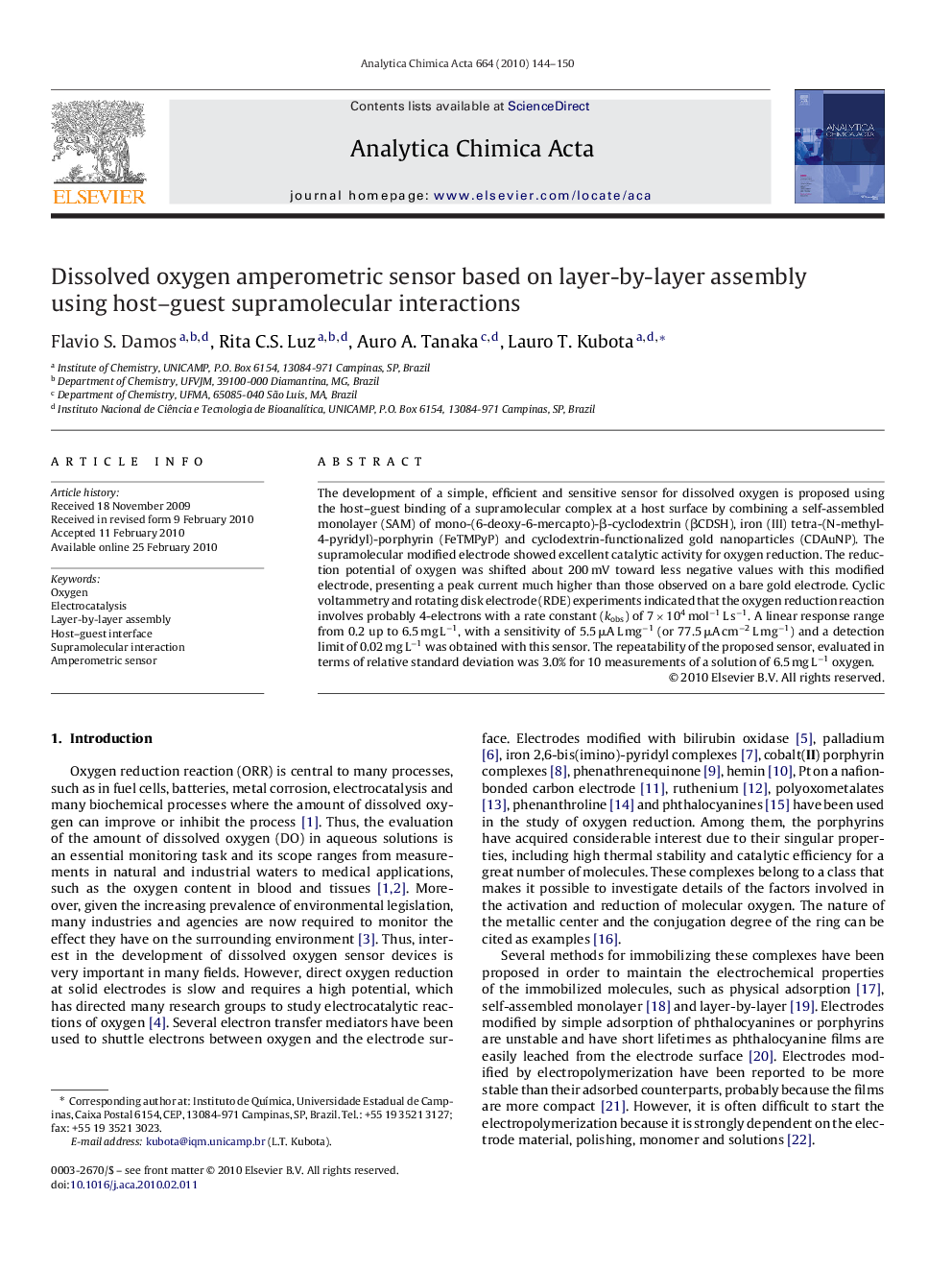| Article ID | Journal | Published Year | Pages | File Type |
|---|---|---|---|---|
| 1167753 | Analytica Chimica Acta | 2010 | 7 Pages |
Abstract
The development of a simple, efficient and sensitive sensor for dissolved oxygen is proposed using the host-guest binding of a supramolecular complex at a host surface by combining a self-assembled monolayer (SAM) of mono-(6-deoxy-6-mercapto)-β-cyclodextrin (βCDSH), iron (III) tetra-(N-methyl-4-pyridyl)-porphyrin (FeTMPyP) and cyclodextrin-functionalized gold nanoparticles (CDAuNP). The supramolecular modified electrode showed excellent catalytic activity for oxygen reduction. The reduction potential of oxygen was shifted about 200 mV toward less negative values with this modified electrode, presenting a peak current much higher than those observed on a bare gold electrode. Cyclic voltammetry and rotating disk electrode (RDE) experiments indicated that the oxygen reduction reaction involves probably 4-electrons with a rate constant (kobs) of 7 Ã 104 molâ1 L sâ1. A linear response range from 0.2 up to 6.5 mg Lâ1, with a sensitivity of 5.5 μA L mgâ1 (or 77.5 μA cmâ2 L mgâ1) and a detection limit of 0.02 mg Lâ1 was obtained with this sensor. The repeatability of the proposed sensor, evaluated in terms of relative standard deviation was 3.0% for 10 measurements of a solution of 6.5 mg Lâ1 oxygen.
Related Topics
Physical Sciences and Engineering
Chemistry
Analytical Chemistry
Authors
Flavio S. Damos, Rita C.S. Luz, Auro A. Tanaka, Lauro T. Kubota,
